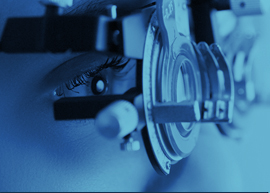The following is a list of common eye conditions. For information about cataracts, glaucoma, macular degeneration and diabetic retinopathy please see Eye Diseases.
- Commonly called "lazy eye", amblyopia can be treated successfully if detected early enough in childhood.
- Often mistakenly called “stigmatism,” this common vision problem can be corrected with eyeglasses, contact lenses or refractive surgery.
- Red, swollen eyelids and crusty debris at the base of your eyelashes are signs you may have blepharitis.
- AIDS or other diseases that affect your immune system can increase your risk of serious eye problems from cytomegalovirus (CMV) infection.
- People with serious vision problems from an eye injury or disease affecting the front surface of the eye can often regain vision with a cornea transplant.
- Are you bothered by red, itchy eyes? You may have allergies.
- “Floaters” are usually normal and harmless. But if you notice a sudden increase in floaters or floaters accompanied by flashes of light, see your eye doctor immediately.
- Also called farsightedness, hyperopia is a common vision problem that can cause headaches, eyestrain and trouble reading.
- This eye disease causes the cornea to grow thinner and bulge forward in an irregular cone-shape. Treatment options range from gas permeable contact lenses to a cornea transplant.
- Low vision is the term used to describe reduced eyesight that cannot be fully corrected with eyeglasses, contact lenses or eye surgery. The primary causes of low vision are eye diseases, but low vision also can be inherited or caused by an eye or brain injury.
- Also called nearsightedness, myopia is a very common vision problem, affecting up to one-third of the U.S. population.
- You’ve heard of high blood pressure, but what about high eye pressure?
- This acute and contagious form of conjunctivitis is particularly common among preschoolers and school-age children.




